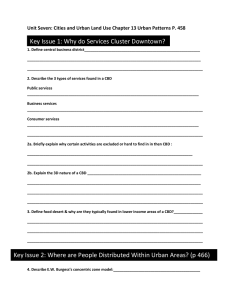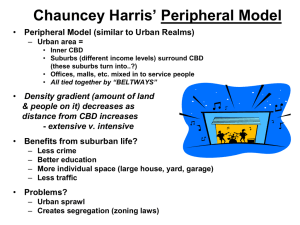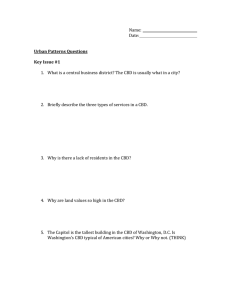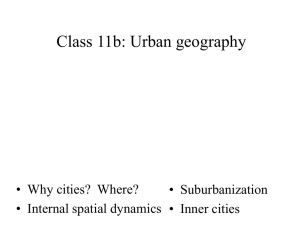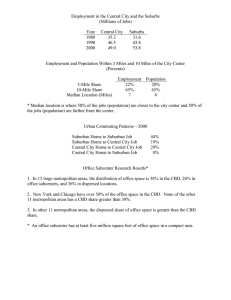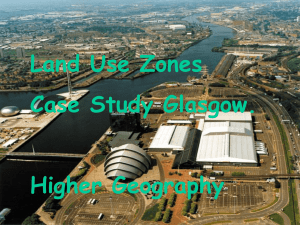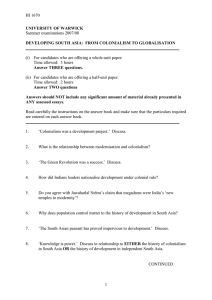Multiple Choice Questions: The City part II
advertisement
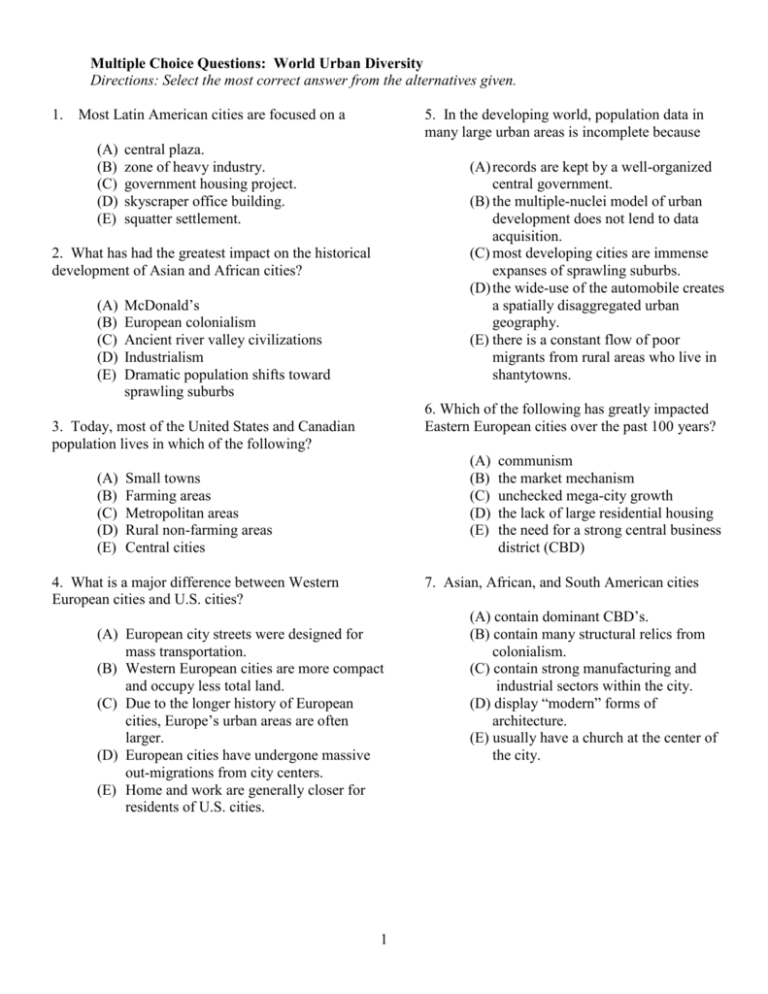
Multiple Choice Questions: World Urban Diversity Directions: Select the most correct answer from the alternatives given. 1. Most Latin American cities are focused on a (A) (B) (C) (D) (E) 5. In the developing world, population data in many large urban areas is incomplete because central plaza. zone of heavy industry. government housing project. skyscraper office building. squatter settlement. (A) records are kept by a well-organized central government. (B) the multiple-nuclei model of urban development does not lend to data acquisition. (C) most developing cities are immense expanses of sprawling suburbs. (D) the wide-use of the automobile creates a spatially disaggregated urban geography. (E) there is a constant flow of poor migrants from rural areas who live in shantytowns. 2. What has had the greatest impact on the historical development of Asian and African cities? (A) (B) (C) (D) (E) McDonald’s European colonialism Ancient river valley civilizations Industrialism Dramatic population shifts toward sprawling suburbs 6. Which of the following has greatly impacted Eastern European cities over the past 100 years? 3. Today, most of the United States and Canadian population lives in which of the following? (A) (B) (C) (D) (E) (A) (B) (C) (D) (E) Small towns Farming areas Metropolitan areas Rural non-farming areas Central cities 4. What is a major difference between Western European cities and U.S. cities? communism the market mechanism unchecked mega-city growth the lack of large residential housing the need for a strong central business district (CBD) 7. Asian, African, and South American cities (A) European city streets were designed for mass transportation. (B) Western European cities are more compact and occupy less total land. (C) Due to the longer history of European cities, Europe’s urban areas are often larger. (D) European cities have undergone massive out-migrations from city centers. (E) Home and work are generally closer for residents of U.S. cities. 1 (A) contain dominant CBD’s. (B) contain many structural relics from colonialism. (C) contain strong manufacturing and industrial sectors within the city. (D) display “modern” forms of architecture. (E) usually have a church at the center of the city.
